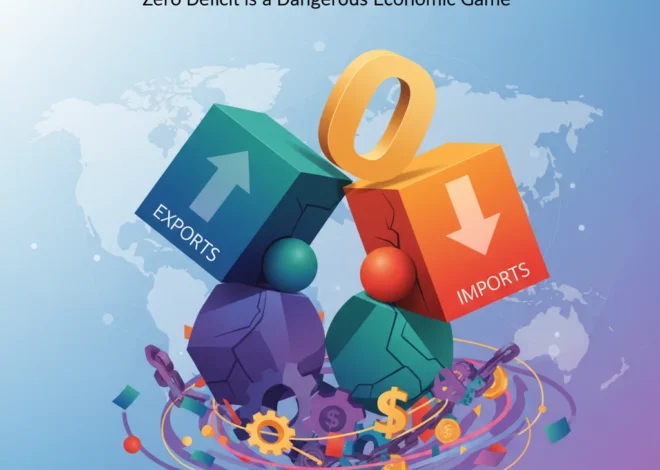
Beyond the False Choice: Why Climate Finance is the Key to Unlocking Global Economic Growth
The High-Stakes Debate: Must Developing Nations Choose Between Progress and the Planet?
In the world of global development and high finance, few voices carry as much weight as Bill Gates. His philanthropic efforts and technological optimism have shaped conversations for decades. Recently, however, a narrative he has promoted has sparked a critical debate: the idea that developing countries face a stark choice between lifting their populations out of poverty using affordable fossil fuels and pursuing costly climate action. This sentiment suggests that the path to prosperity forged by the West—powered by coal, oil, and gas—is a necessary, if unfortunate, rite of passage for the Global South.
But what if this is a fundamentally flawed premise? What if it’s a dangerous “false choice,” as Bob Ward of the Grantham Research Institute on Climate Change and the Environment at LSE argued in a letter to the Financial Times? This isn’t just an academic squabble; it’s a debate that will define the trajectory of the global economy, shape multi-trillion-dollar investment flows, and determine the quality of life for billions of people. The reality is that for developing nations, climate action and economic development are not mutually exclusive goals. In the 21st century, they are two sides of the same coin, inextricably linked by the powerful forces of modern finance, technology, and risk.
Deconstructing the Myth: The Crippling Economics of Climate Inaction
The argument for a fossil-fueled development path is rooted in a 20th-century mindset. It ignores a crucial reality: the very countries seeking to build their economies are on the front lines of climate change’s devastating impacts. Encouraging further investment in fossil fuel infrastructure locks these nations into a future of escalating risk and economic instability.
Consider the evidence. Developing countries, despite contributing the least to historical emissions, are disproportionately vulnerable. The World Meteorological Organization reported that extreme weather events in Asia alone affected 50 million people and caused over $36 billion in economic damages in 2022. In Africa, the African Development Bank estimates that the continent is already losing between 5% and 15% of its GDP per capita growth due to climate change. These are not abstract future threats; they are present-day economic crises derailing progress.
Locking these economies into fossil fuel dependency creates a vicious cycle:
- Increased Vulnerability: Continued emissions worsen climate impacts like droughts, floods, and sea-level rise, destroying infrastructure, disrupting agriculture, and displacing populations.
- Stranded Assets: As the world inevitably transitions to clean energy, multi-billion dollar investments in new coal plants, oil pipelines, and gas terminals will become worthless “stranded assets,” saddling developing economies with massive, unproductive debts.
- Energy Insecurity: Reliance on fossil fuels ties a nation’s economic health to volatile global energy markets, making them susceptible to price shocks and geopolitical conflicts far beyond their control.
From an investing perspective, promoting fossil fuels in these regions is not a pro-growth strategy; it’s an endorsement of high-risk, short-term thinking that ignores clear and present dangers to long-term economic stability.
The True Cost-Benefit Analysis: Investing in Resilience vs. Paying for Disaster
When we reframe the debate around a proper risk-adjusted economic analysis, the picture becomes clear. The upfront cost of building a resilient, green economy is an investment, while the cost of inaction is an ever-compounding liability. The financial case for prioritizing green development is overwhelming.
Let’s compare the projected costs. While figures vary by region, the overall trend is consistent. The investment required for a green transition is significantly less than the economic damages that will be incurred from unchecked climate change.
Below is a simplified comparison illustrating the economic trade-offs for a hypothetical developing region:
| Economic Consideration | Fossil Fuel Path (Status Quo) | Green Investment Path (Transition) |
|---|---|---|
| Energy Costs | Volatile, subject to global market shocks, long-term import dependency. | High upfront capital, but near-zero marginal costs for solar/wind, leading to long-term price stability and energy independence. |
| Economic Damages from Climate | Extremely high and accelerating (infrastructure loss, agricultural failure, health costs). A study by Swiss Re predicts climate change could shrink the world economy by 18% by 2050 if no action is taken. | Significantly mitigated. Investments in resilient infrastructure and sustainable agriculture reduce exposure to climate shocks. |
| Job Creation | Concentrated in extractive industries, often with limited local economic multipliers. | Distributed across manufacturing, installation, maintenance, and technology sectors, fostering local innovation and a skilled workforce. |
| Long-Term Financial Risk | High risk of stranded assets, credit rating downgrades, and capital flight as global markets penalize carbon intensity. | Attracts green finance, ESG-focused investment, and aligns with global market trends, reducing long-term financial risk. |
The Multi-Trillion Dollar Opportunity in Green Development
Viewing the climate challenge through the lens of opportunity reveals a landscape ripe for innovation and investment. This is where modern financial technology and forward-thinking capital can make a transformative impact. The goal is not to ask developing nations to sacrifice growth for the climate, but to empower them with superior technology and financing models to achieve sustainable prosperity.
Several key areas are poised for explosive growth:
- Decentralized Renewable Energy: For many rural communities, centralized power grids are an expensive and impractical dream. Decentralized solar and wind microgrids, however, can provide reliable, affordable electricity. This is a massive opportunity for investors in renewable technology and infrastructure funds.
- Green Finance Innovation: The demand for green projects far outstrips the supply of traditional financing. This gap is being filled by green bonds, blended finance vehicles, and impact investment funds. The banking sector has a pivotal role to play in creating and scaling these instruments.
- The Role of Fintech and Blockchain: Financial technology is a game-changer. Fintech platforms can facilitate peer-to-peer lending for solar installations, reducing costs and increasing access to capital. Blockchain technology can provide an immutable ledger for carbon credit trading, ensuring transparency and preventing fraud. It can also be used to track the flow of green investment funds, giving investors confidence that their capital is being used as intended.
The Investor's Gambit: Why Solving a Crossword is Like Mastering the Stock Market
A Roadmap for Investors and Policymakers
Unlocking this potential requires a concerted effort from both the public and private sectors. It’s not enough to simply identify the opportunity; we must actively dismantle the barriers that stand in the way.
Here is a practical roadmap for accelerating the green transition in developing economies:
- De-Risking Investment: Governments in developed nations and multilateral institutions like the World Bank must expand programs that de-risk private investment. This includes offering political risk insurance, first-loss capital, and currency hedging instruments to make green projects in emerging markets more attractive to institutional investors.
- Create Supportive Policies: Developing countries need to create stable, long-term policy frameworks. This means transparent regulations, streamlined permitting for renewable projects, and the phasing out of fossil fuel subsidies, which create a distorted market. A clear, consistent policy environment is the single most important factor for attracting private capital.
- Invest in Human Capital: The transition requires a skilled workforce. Investment in education and vocational training for solar technicians, wind engineers, and green-tech entrepreneurs is essential for ensuring the benefits of the transition are localized.
- Foster Public-Private Partnerships (PPPs): Large-scale infrastructure projects are often too large and complex for either the public or private sector to handle alone. Well-structured PPPs can leverage public funds to attract multiples of private investment, accelerating the pace of development.
The 500-Year Portfolio: What a Tudor Mansion Teaches Us About Modern Investing
Conclusion: Choosing a Future of Shared Prosperity
The debate over development and climate action is not a choice between two competing priorities. It is a choice between an outdated, high-risk economic model of the past and a resilient, innovative, and prosperous model for the future. By perpetuating the false choice, we do a grave disservice to the very nations we aim to support, steering them toward a future of climate vulnerability and stranded economic assets.
For investors, business leaders, and finance professionals, the path forward is clear. The greatest returns—both financial and social—will be found not in funding the last vestiges of the fossil fuel era, but in financing the clean energy infrastructure that will form the bedrock of the 21st-century global economy. It’s time to move beyond the false choice and start investing in a future of shared, sustainable prosperity.


